Nagaland: Kigwema – Potatoes and Pumpkin make nice Skin
11. November 2025

In the morning, I set off with my driver Abul to Kigwema, a village of about 7,000 people, where a village guide recommended by Pauls was waiting for me. The village isn’t very far, but the traffic in Kohima is unfortunately full of jams.
A local village always has an entrance gate that can be closed. Around it—or rather, around the whole village—they used to plant lots of thorny vegetation as protection, so that wrongdoers couldn’t easily get in. This village has kept growing over time, and more entrances have been added. The old ones are never, ever torn down—it would bring bad luck.
 villagegate
villagegate
In Nagaland there are about 16 tribes that are considered part of the Nagas (depending on the definition). In Wokha it was the Lothas, in Kohima it’s the Angami—and in Kigwema, too, the Angami live. The village seemed quite traditional to me (though of course with the usual modern touches), and Asi guided me around. She’s 33 years old, unmarried, and comes from a “tourism family.” In her house, two rooms are available for guests to stay in, though that’s currently on hold. Through a friend she got into guiding—and found it a great fit for herself. And I think she’s really good at it, too. Usually, she gets guests sent by local agencies; some of them are a bit stiff or oddly uninterested—but with me, she seemed to genuinely enjoy it. She knows a lot and conveys it beautifully.
I didn’t actually take a really nice photo of her — this one I took together with a little child.
 Asi
Asi
I’ll tell you what she told me — or at least what stuck with me. Kigwema has about 7,000 people (the same number as “my” Ruhpolding!). It’s divided into five sections, called Kher. Each Kher has its own Morung — that’s the bachelors’ house where the young men used to live together and learn various skills. Nowadays that tradition has softened a bit, but each section still has one such house. Next to it there’s a square and a fireplace, where especially in the evenings the older people gather to chat and gossip.
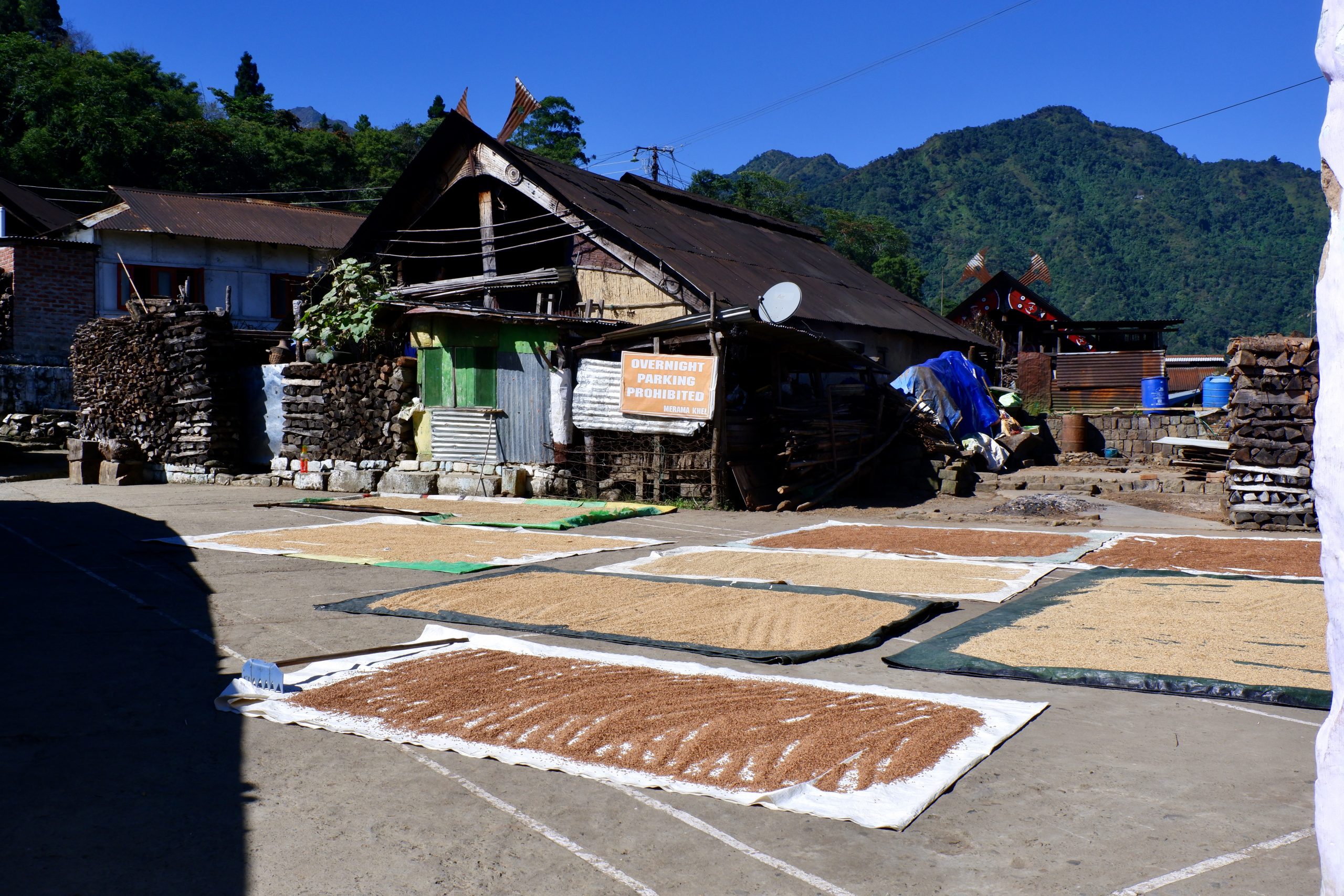 village square
village square
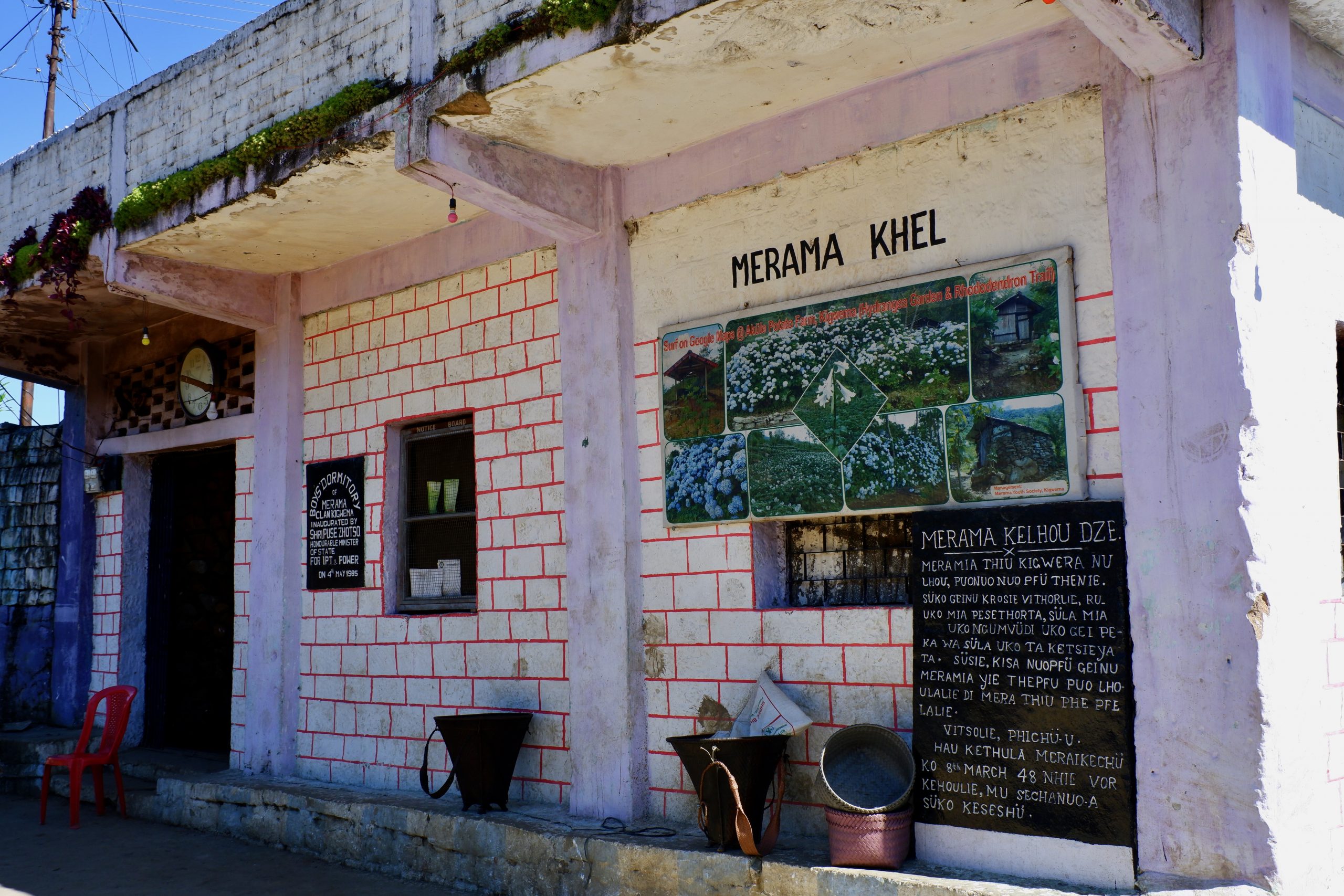 Morung
Morung
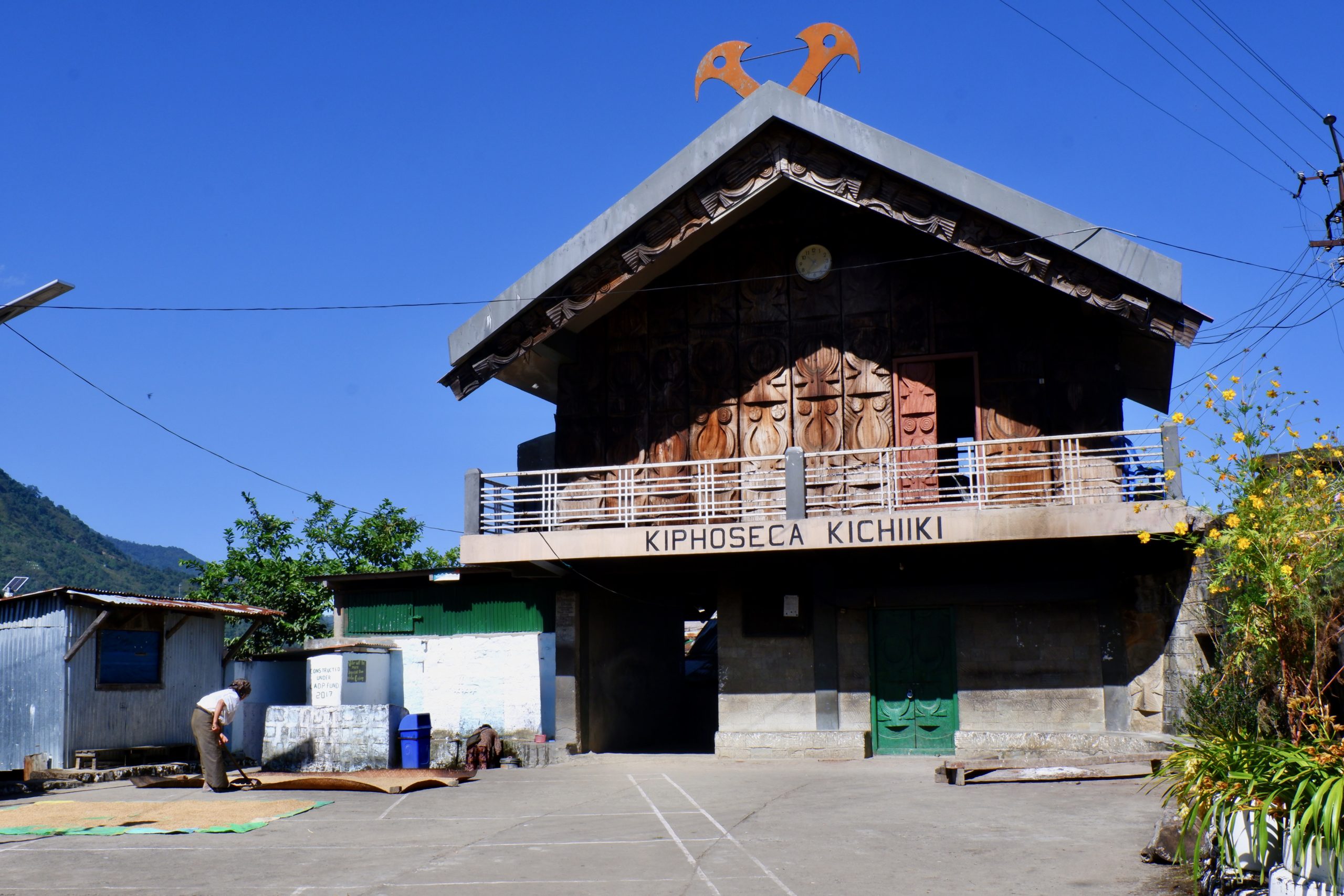 other Morung
other Morung
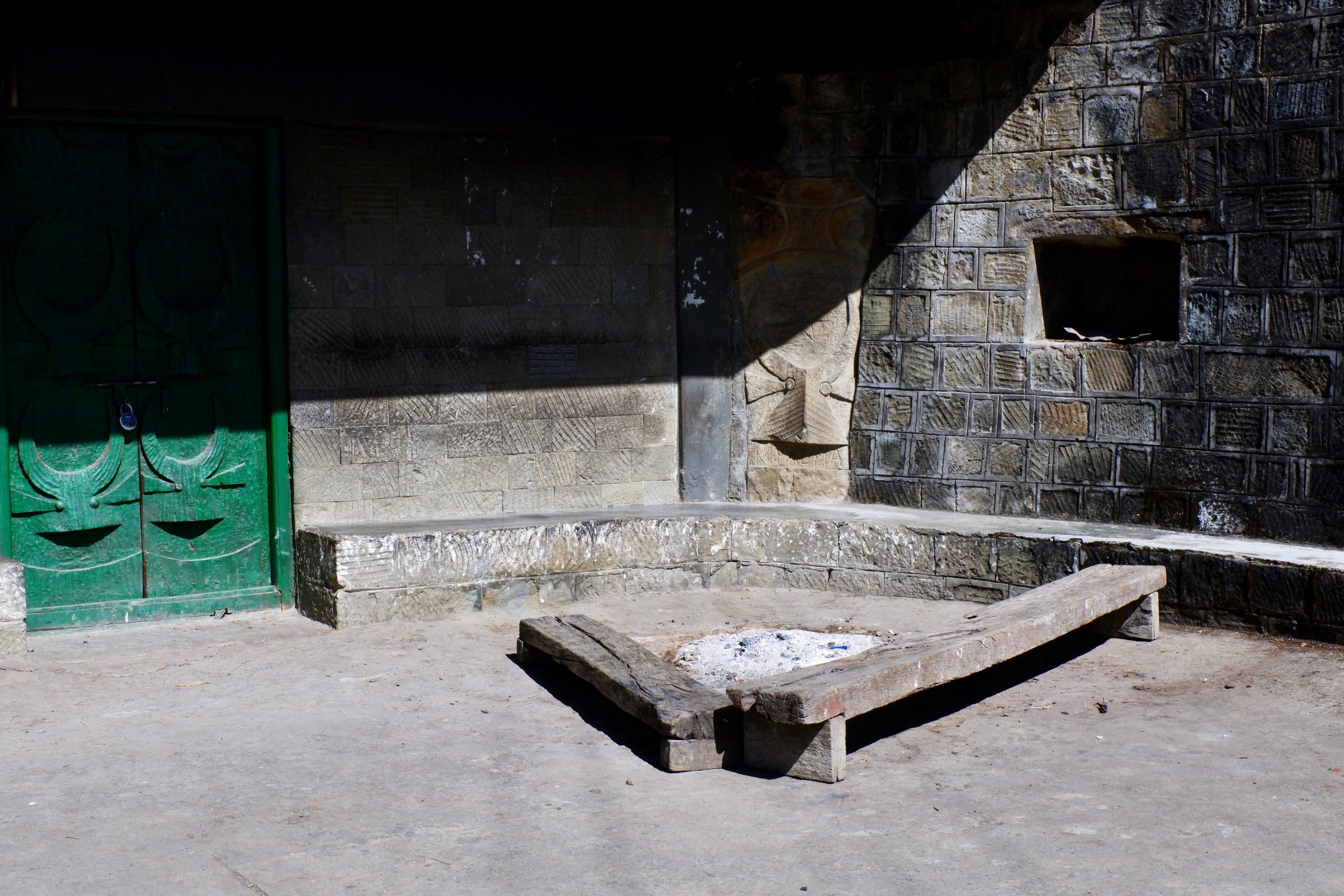 fireplace
fireplace
Then we looked at two old traditional houses from the outside, and she explained a lot to me. The whole village community helps with the construction. Afterwards, depending on a family’s wealth, they host celebrations. The richer someone is, the more mithuns (a local type of bovine) are sacrificed — and the skulls can then be hung above the entrance as a sign of status. To the right of the entrance there’s a small hut where the mithun is slaughtered in a special way, from above. The decorations — the symbolic mithun skulls, the sun and moon for faith, and the breasts for fertility — all have meaning. And then there are pots hanging there too. I can’t remember what occasion they were connected to, but after that event they must never be washed again. Asi once accidentally cleaned them — and got scolded quite a bit for it.
 2 old houses
2 old houses
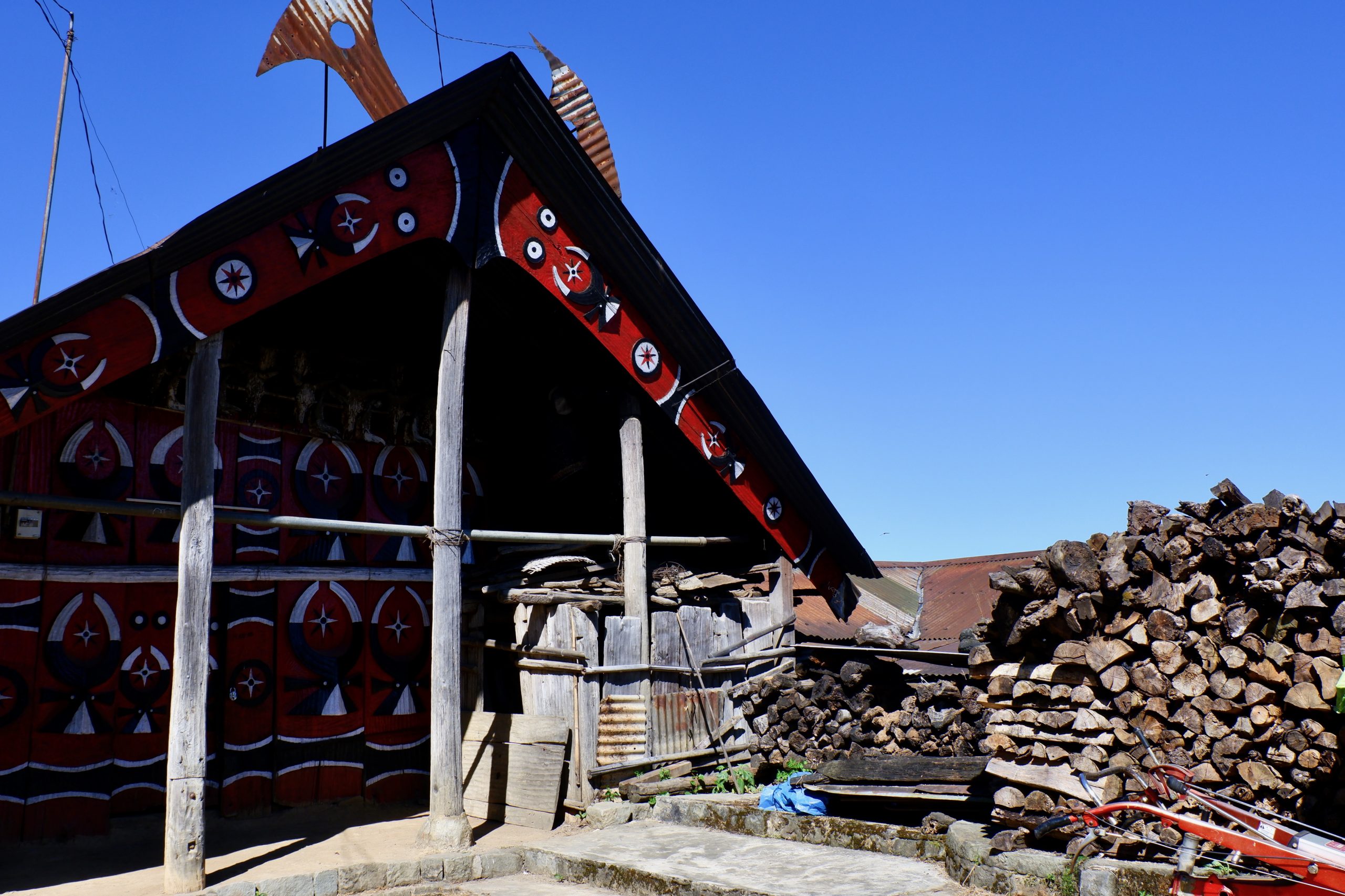 slaughterhouse
slaughterhouse Deco
Deco
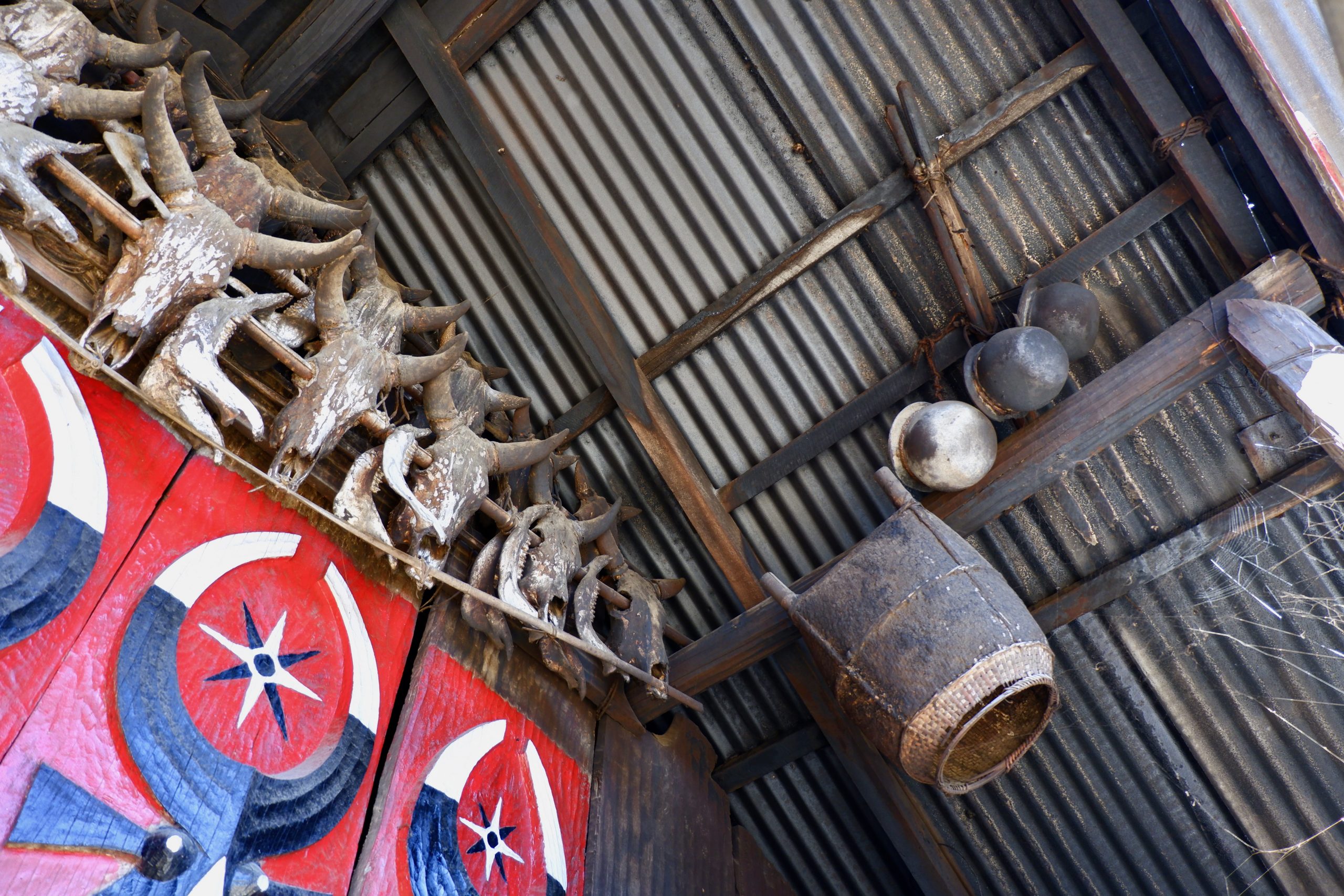 unwashed pots
unwashed pots
Then we met a woman who asked if I’d like to have a glass of water at her home. Asi didn’t know her — they don’t all know each of the 7,000 villagers personally. And another interesting fact: the five different khels each have slightly different dialects! Anyway, I gladly accepted, and so we followed her. The water here comes straight from the mountains — it’s plentiful and of excellent quality. There are even plans to pipe some of it to Kohima, where there’s a water shortage.
When you enter a house, you always pass by the large rice containers first.
 1
1
The kitchen is spacious, and every family has both a gas stove and an open fire. Food cooked over the open fire tastes much better, though it takes longer. There was also a small child who was sad that I couldn’t really understand her. I asked a few questions—and then I was given guava and fig. Very tasty!
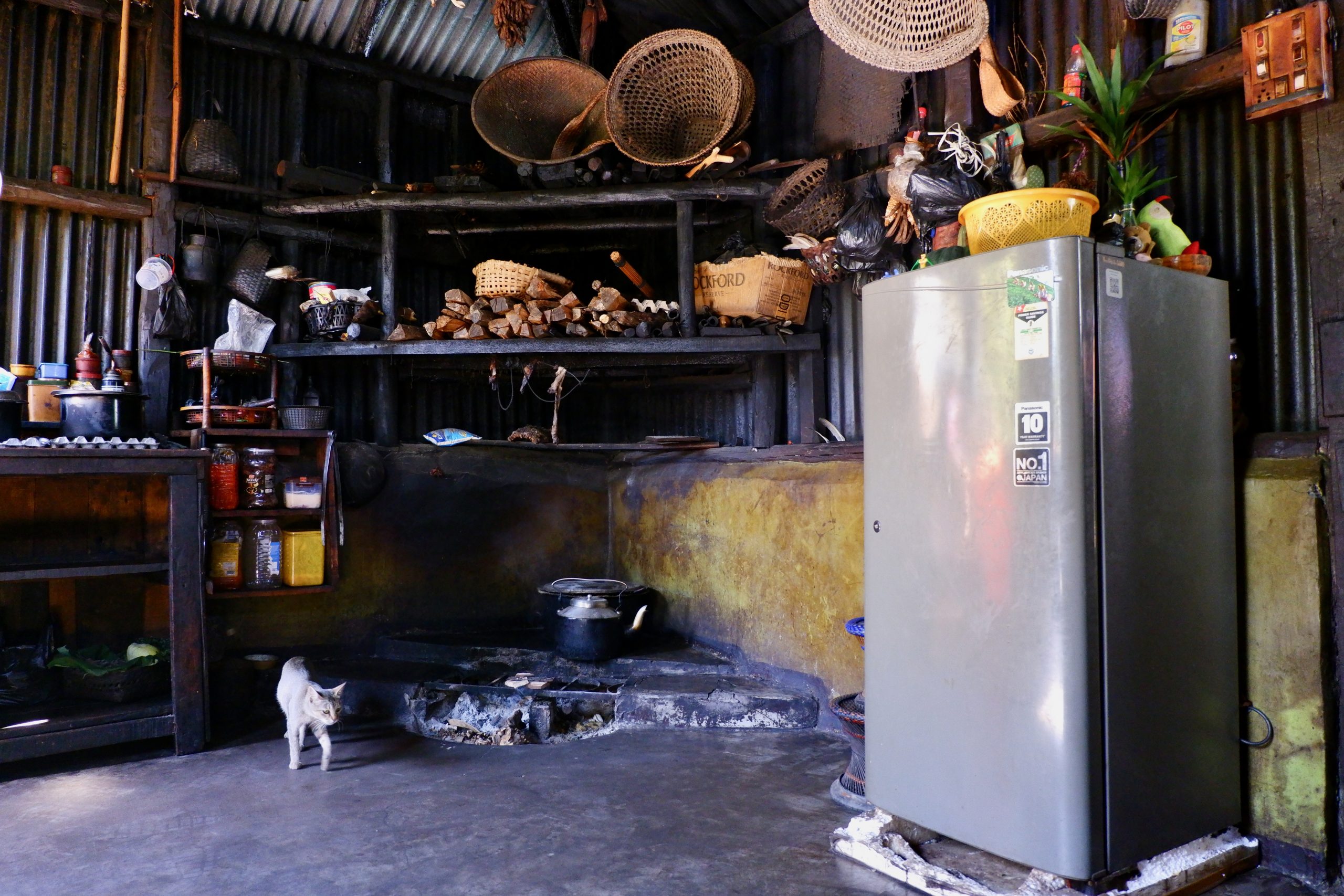 2
2
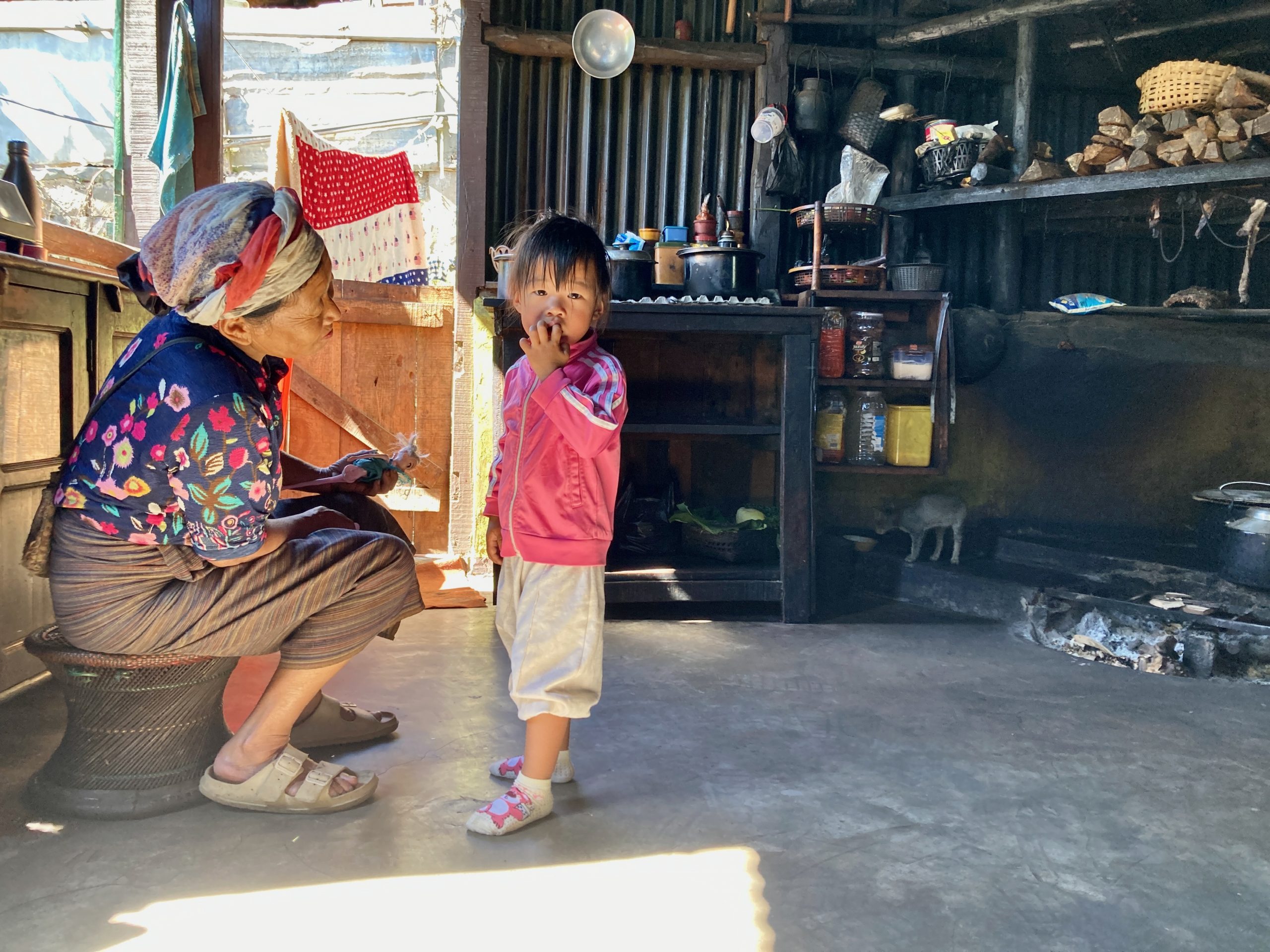 3
3
 4
4
Now about the rice. Most of it had already been harvested and was being prepared for storage. There are many different varieties of rice here. What? There’s no rice in Germany? Oh dear, how do people even survive there???
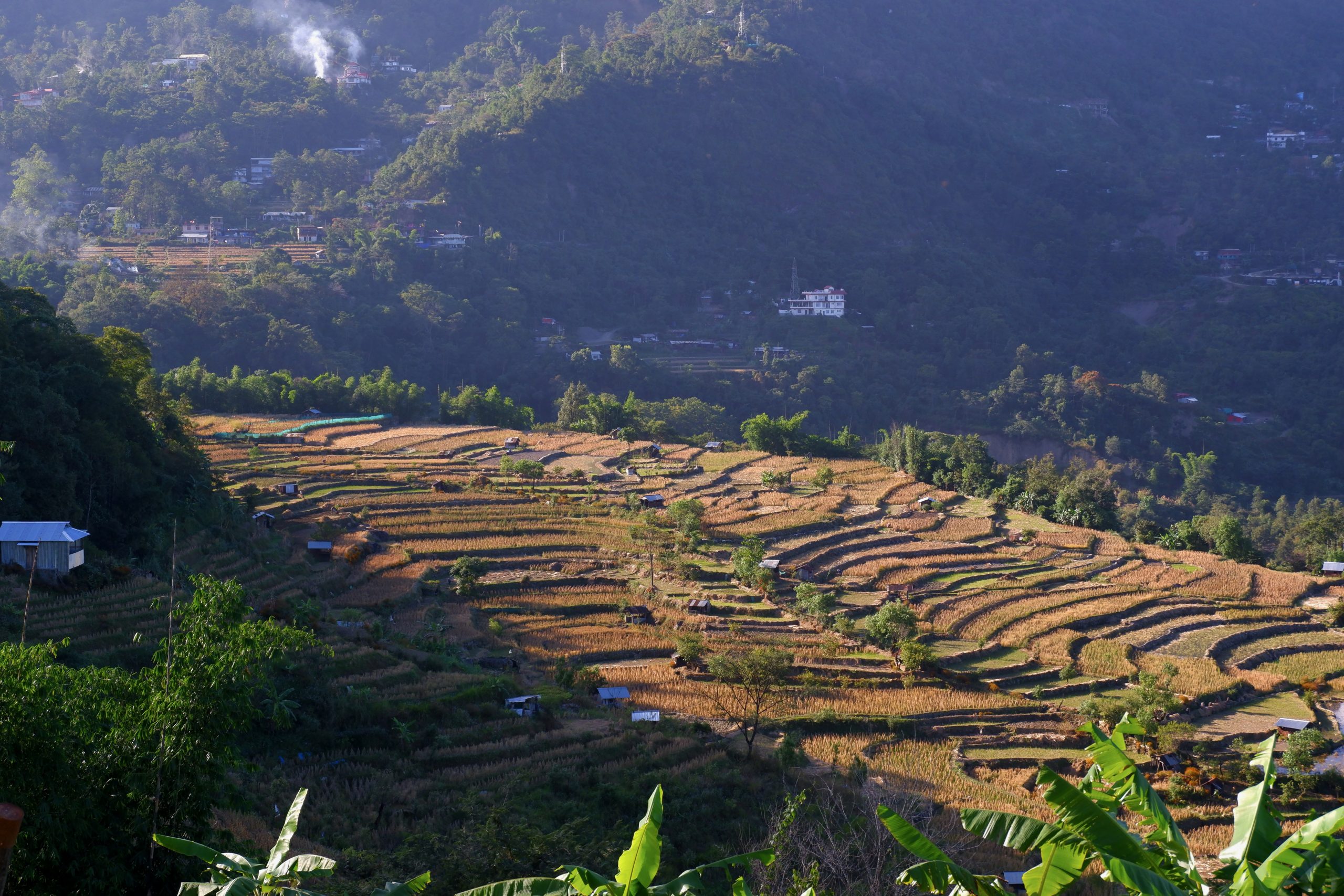 paddy fields
paddy fields
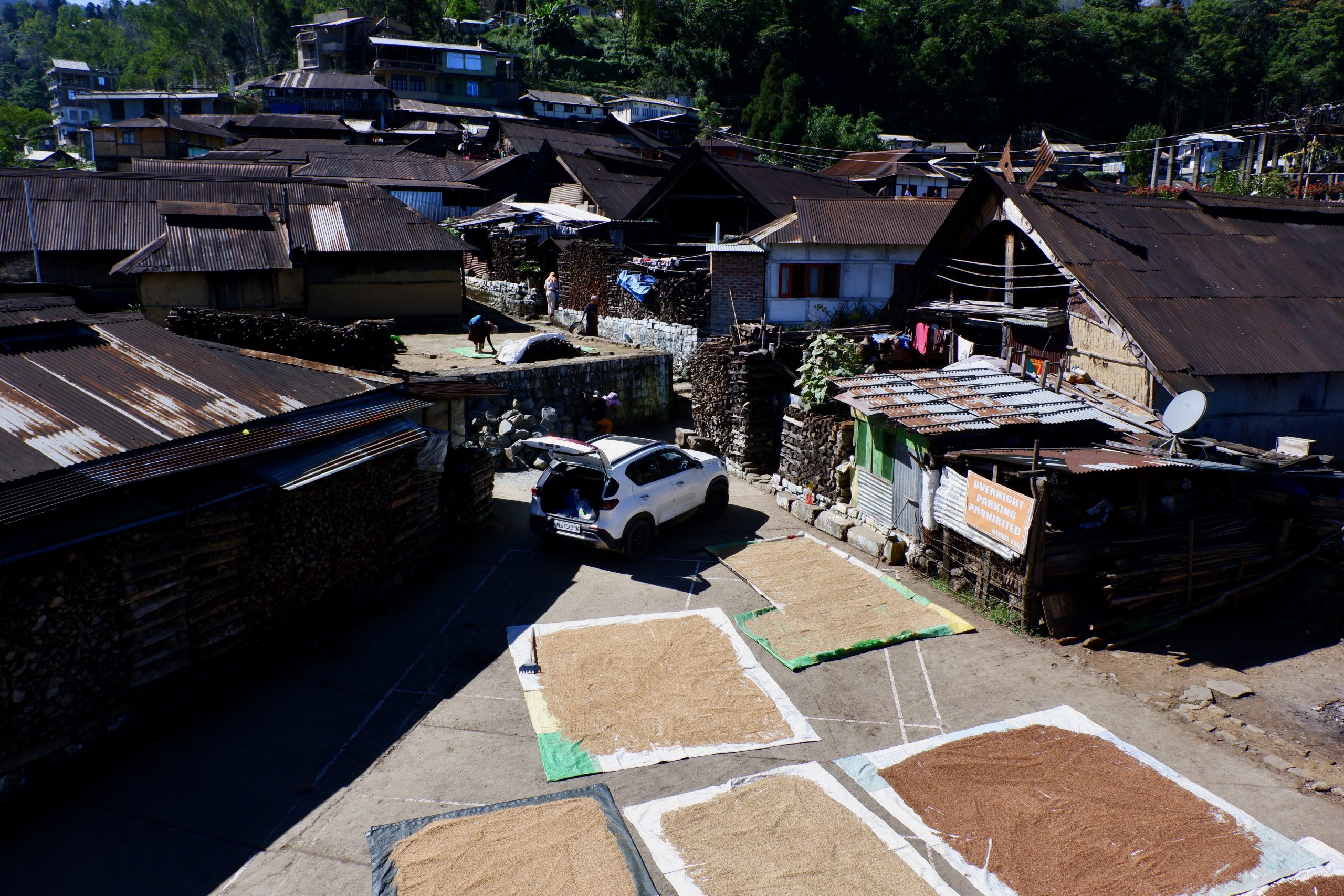 rice drying
rice drying
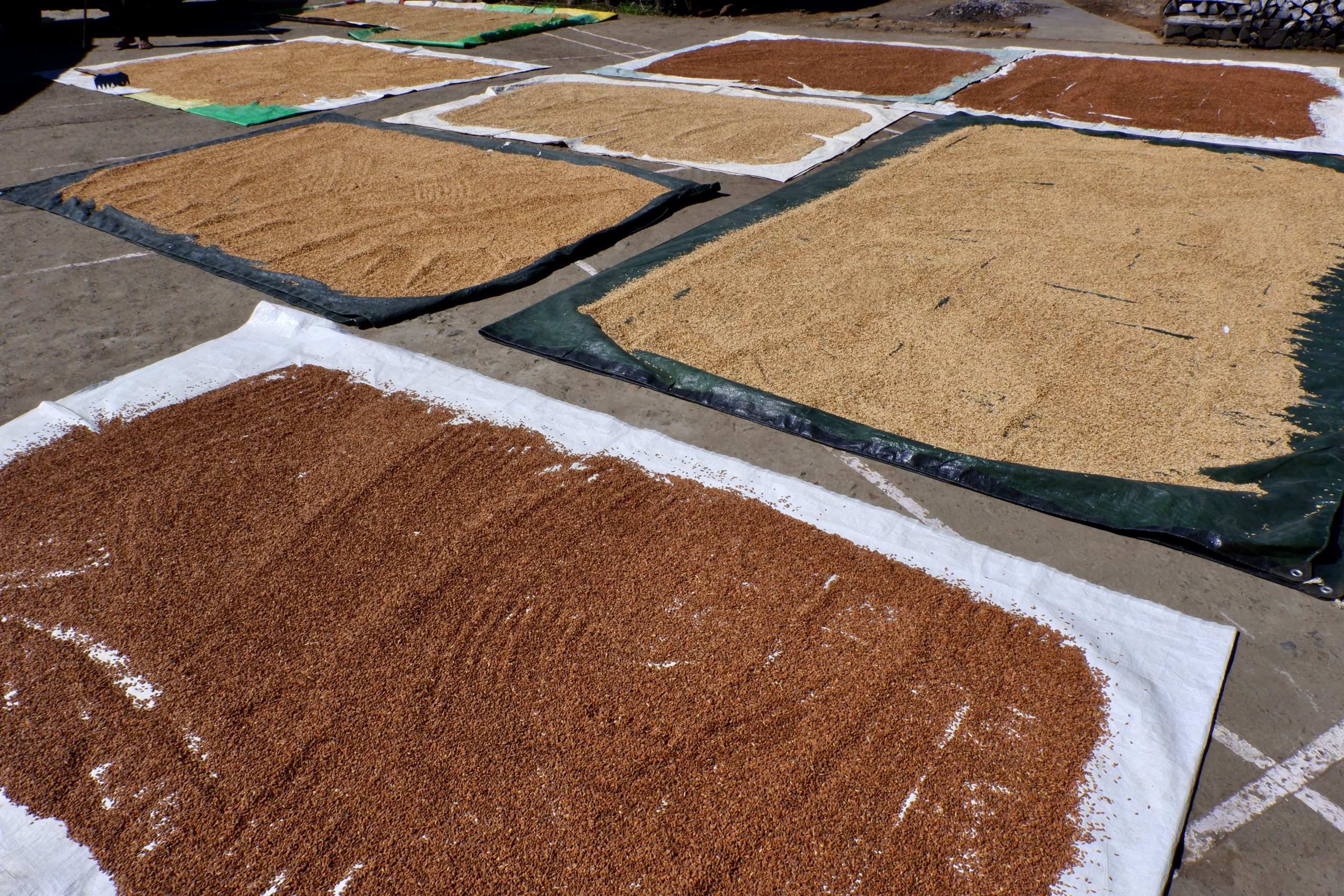 Rice from closer
Rice from closer
And then I was invited by the next woman—for tea. She’s a widow and lives all alone in this house. I asked if she didn’t feel lonely in the evenings. No, she said, she works hard all day and just falls into bed tired. Asi made the tea and was quite shocked when the woman didn’t seem inclined to add lots of milk and sugar. It has to be sweet, she said, because you have a sweet guest whom you honor with sweetness. The woman was a bit overjoyed to have a guest at all. So I was served tea, a kind of rusk biscuit, pumpkin, and rice to taste. At least we have pumpkin in Germany, too. Pumpkin and potatoes—that’s what gives you beautiful skin! And out of sheer joy she had to pray for quite a while before we could drink the tea.
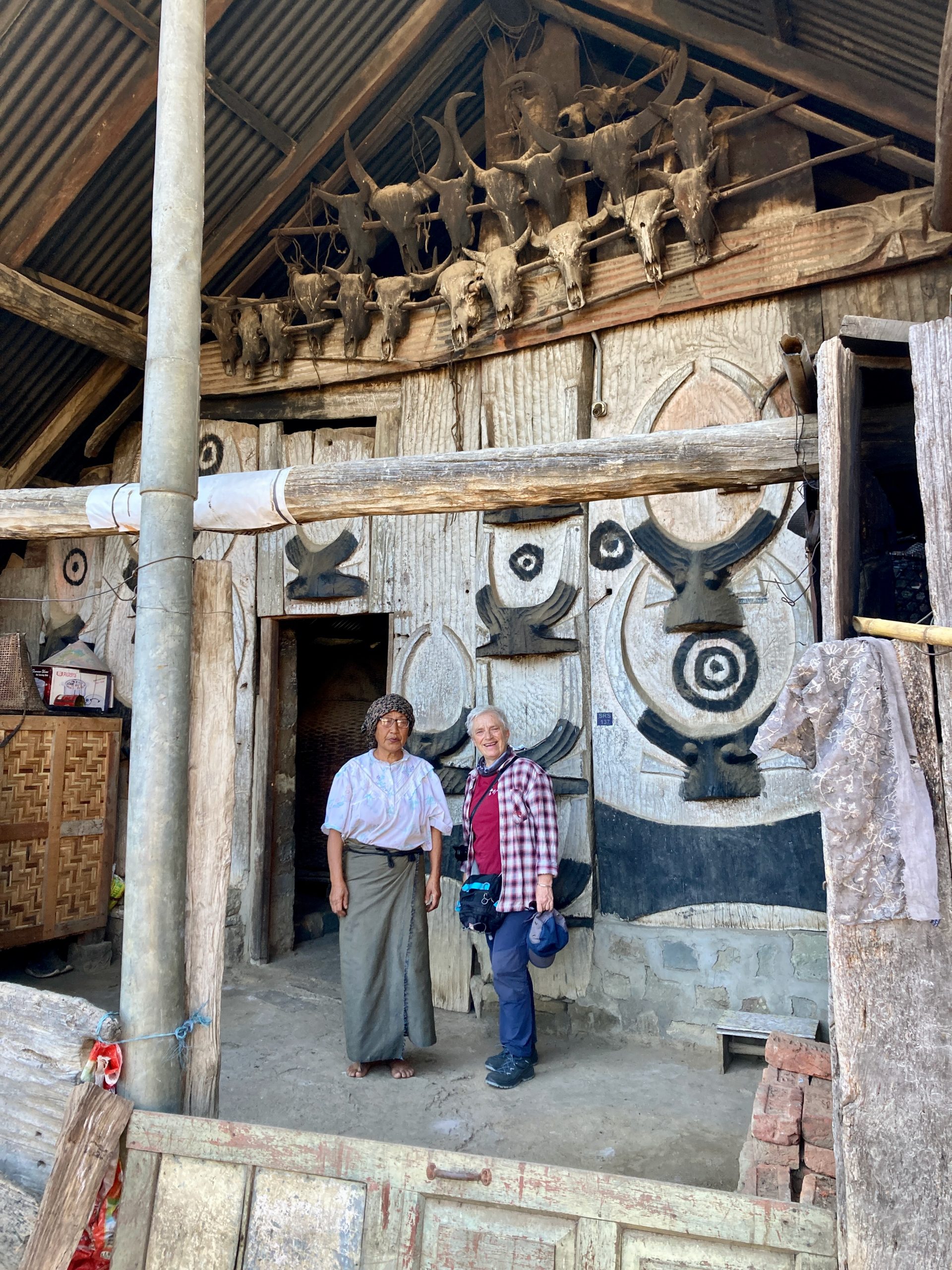 1
1
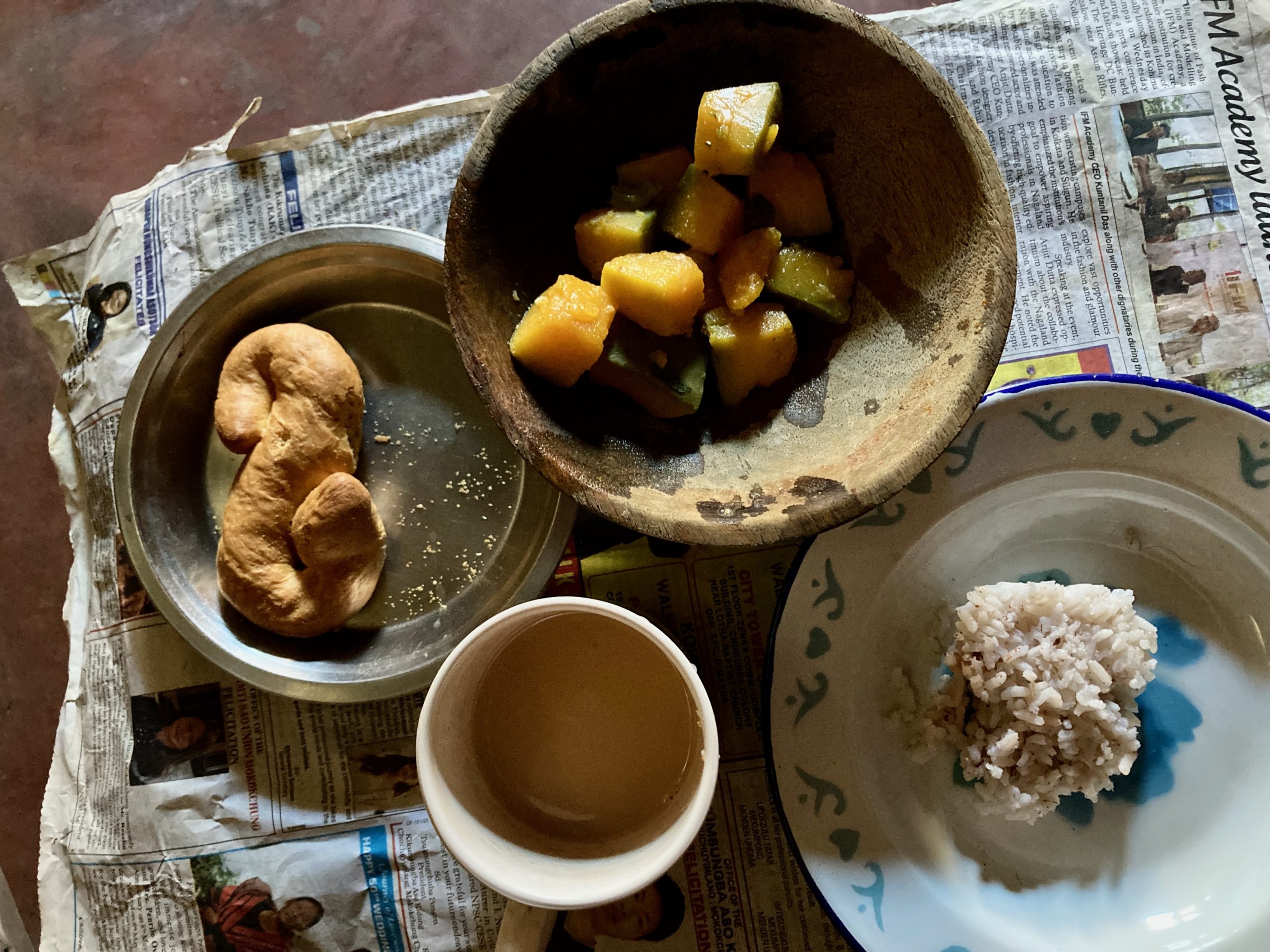 2
2
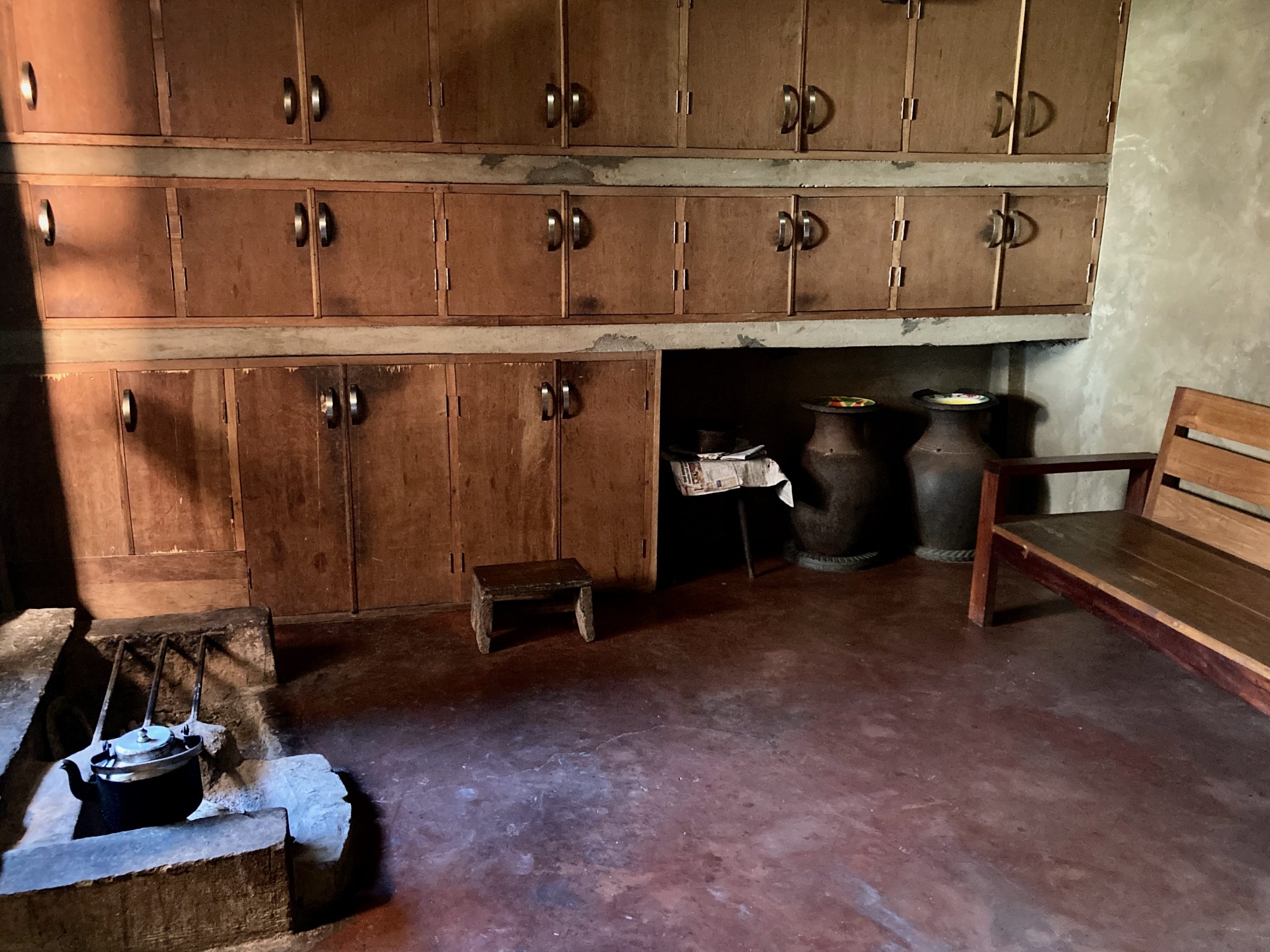 3
3
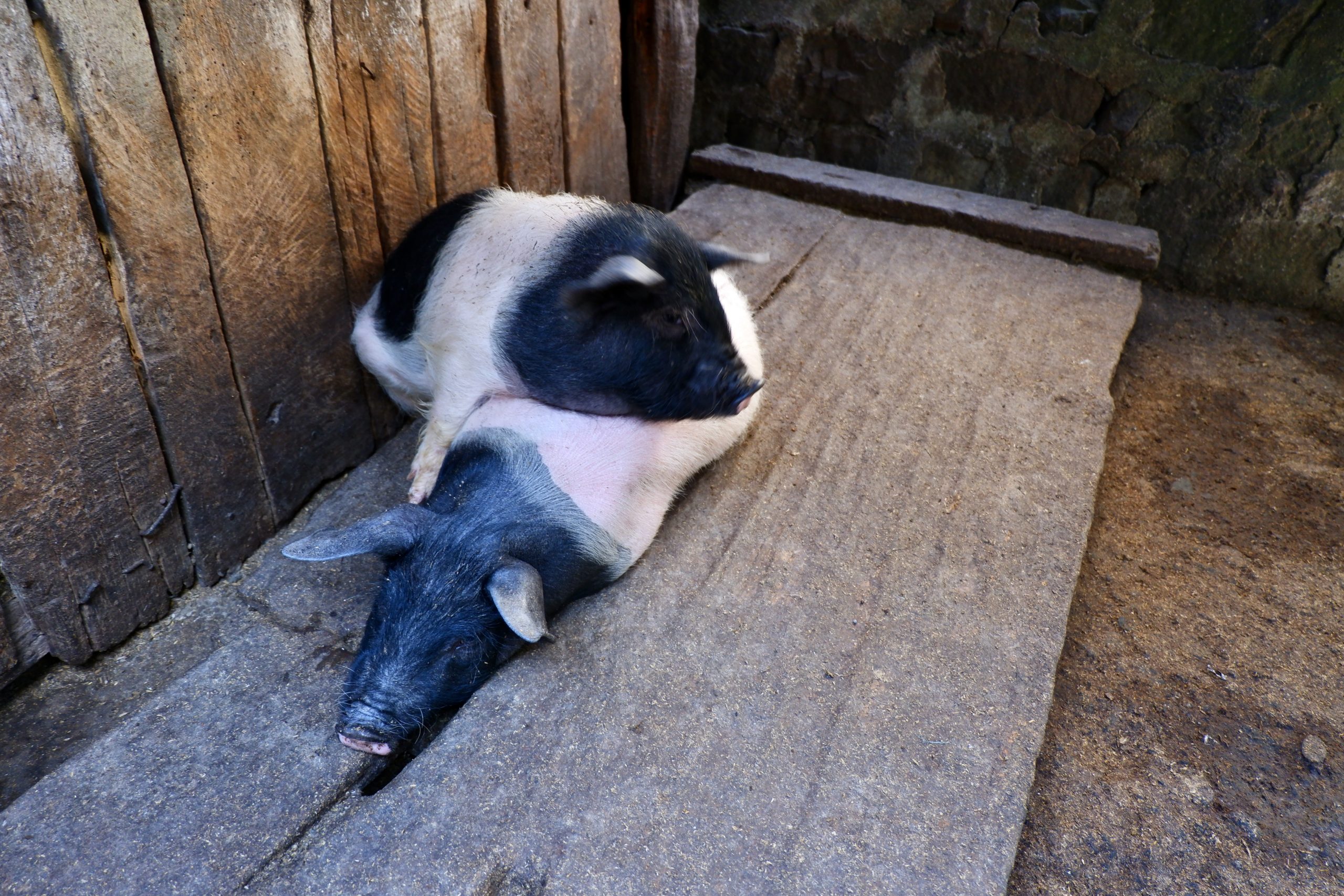 4
4
Besides rice, she also had pigs, chickens, and ducks. What? I don’t eat meat? Oh dear, how unfortunate! Germany also seemed to her like a rather pitiable country, since we have so little of the edible things that grow here. Everyone has some kind of kitchen garden—but it’s actually even “crazier”: plants that can be used somehow grow everywhere. Or they’re just pretty flowers.
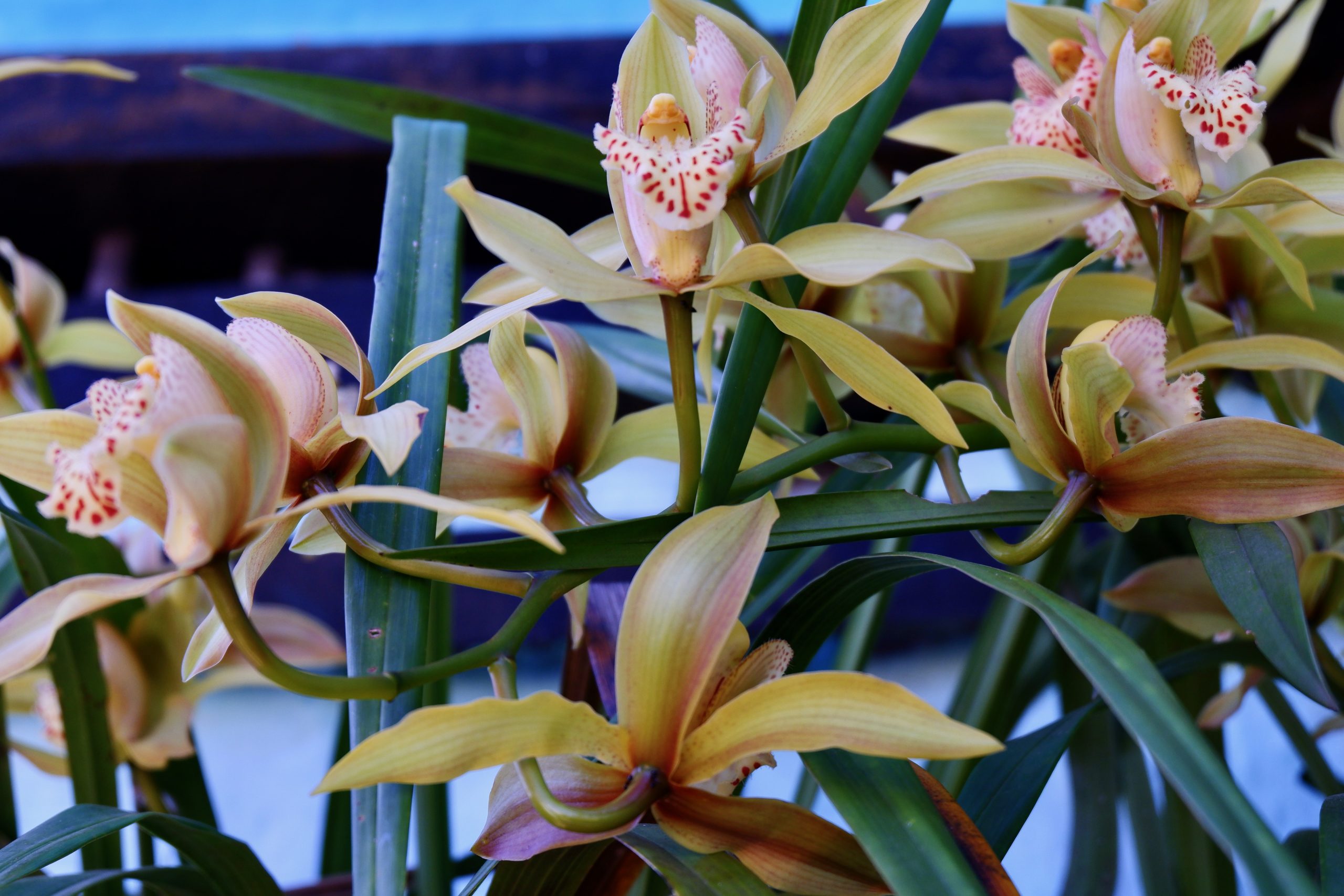 beautiful plants
beautiful plants
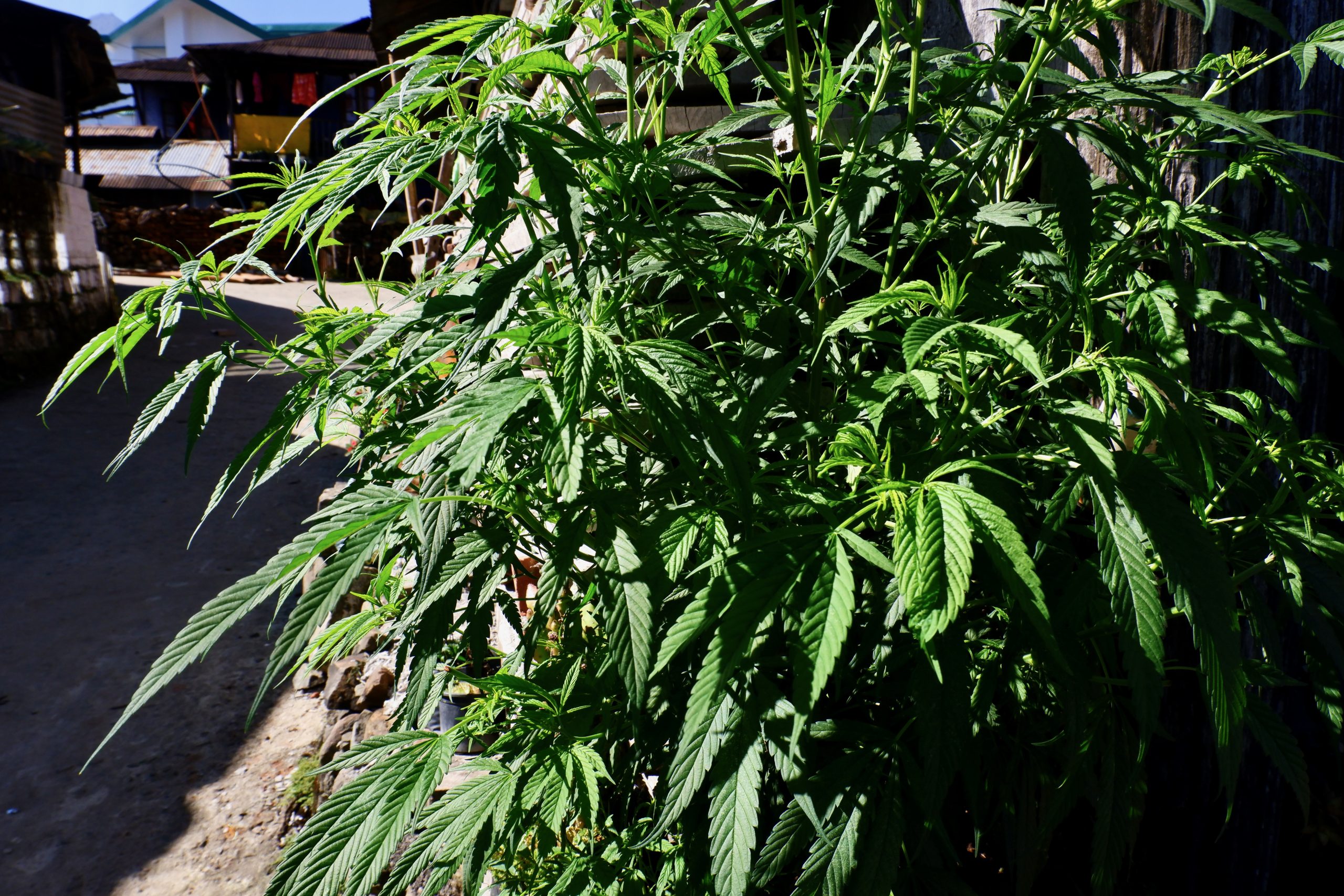 Medicine for animals
Medicine for animals
Each kher also has a viewpoint from which one could, for example, better see if enemies were approaching. In 1944, fierce fighting took place in and around Kohima between the Japanese and the British/Assam Rifles, in which the Japanese were ultimately defeated. Otherwise, the world might have ended up divided a bit differently. The local people were rather indifferent about which side they were on. The British defended them, while the Japanese wanted to help them with decolonization. According to Asi, the whole topic isn’t so simple to judge — but that’s something I still need to learn more about. Just briefly here: a house was built for the Japanese commander at this site, giving him a good vantage point.
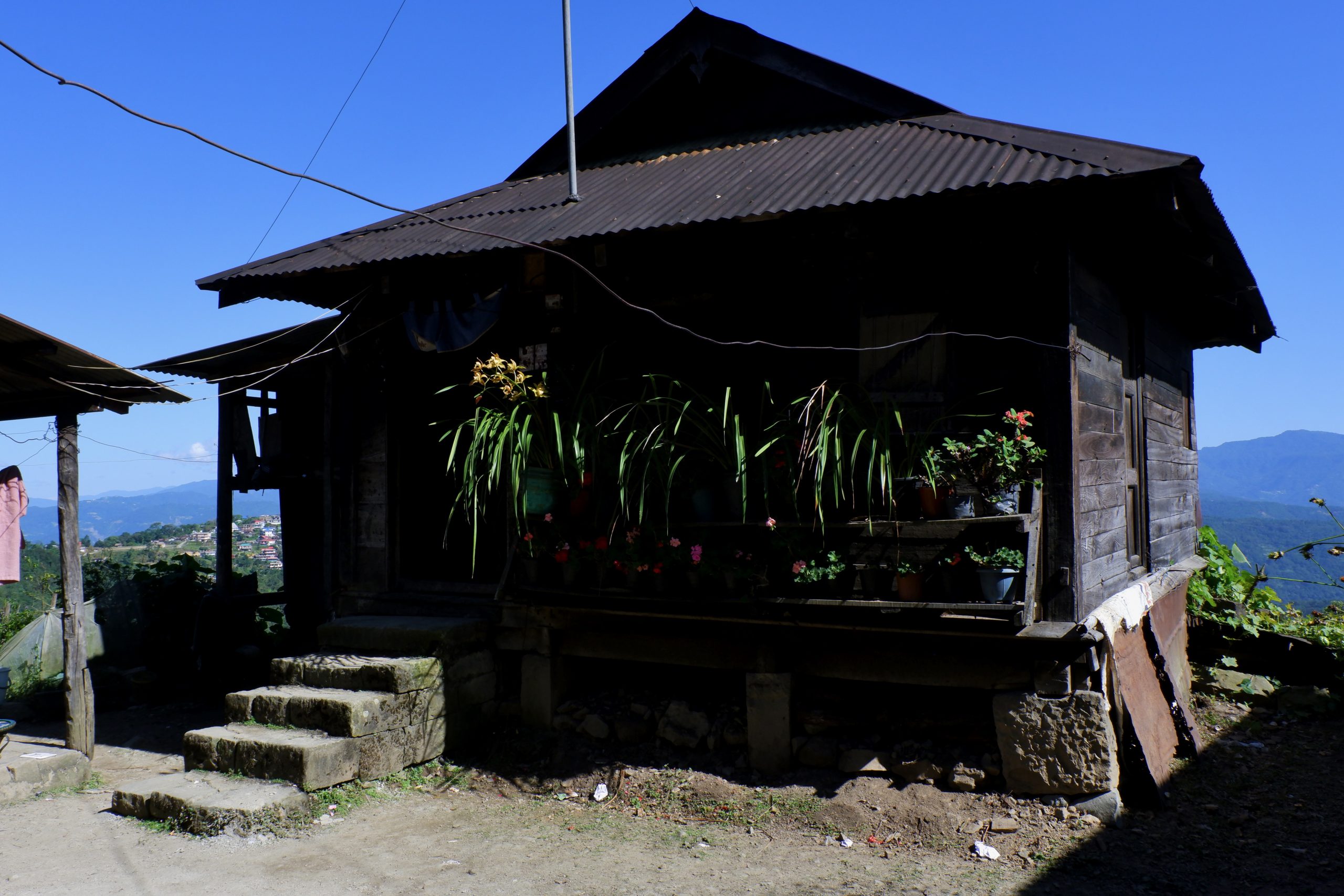 House for Japanese
House for Japanese
 earlier battlefield
earlier battlefield
In India, the Panchayat system has become the standard for handling local affairs (a council of five people who discuss and make decisions). Kigwema was recently honored for being an excellent example of how well this system can work! It’s also worth mentioning that there’s a lovely library here, which is actively used by the community.
 library 1
library 1
 library 2
library 2
In one village, a wedding was being prepared. People here are very strict Christians — you’re expected to enter marriage “pure,”! No sex before the wedding!
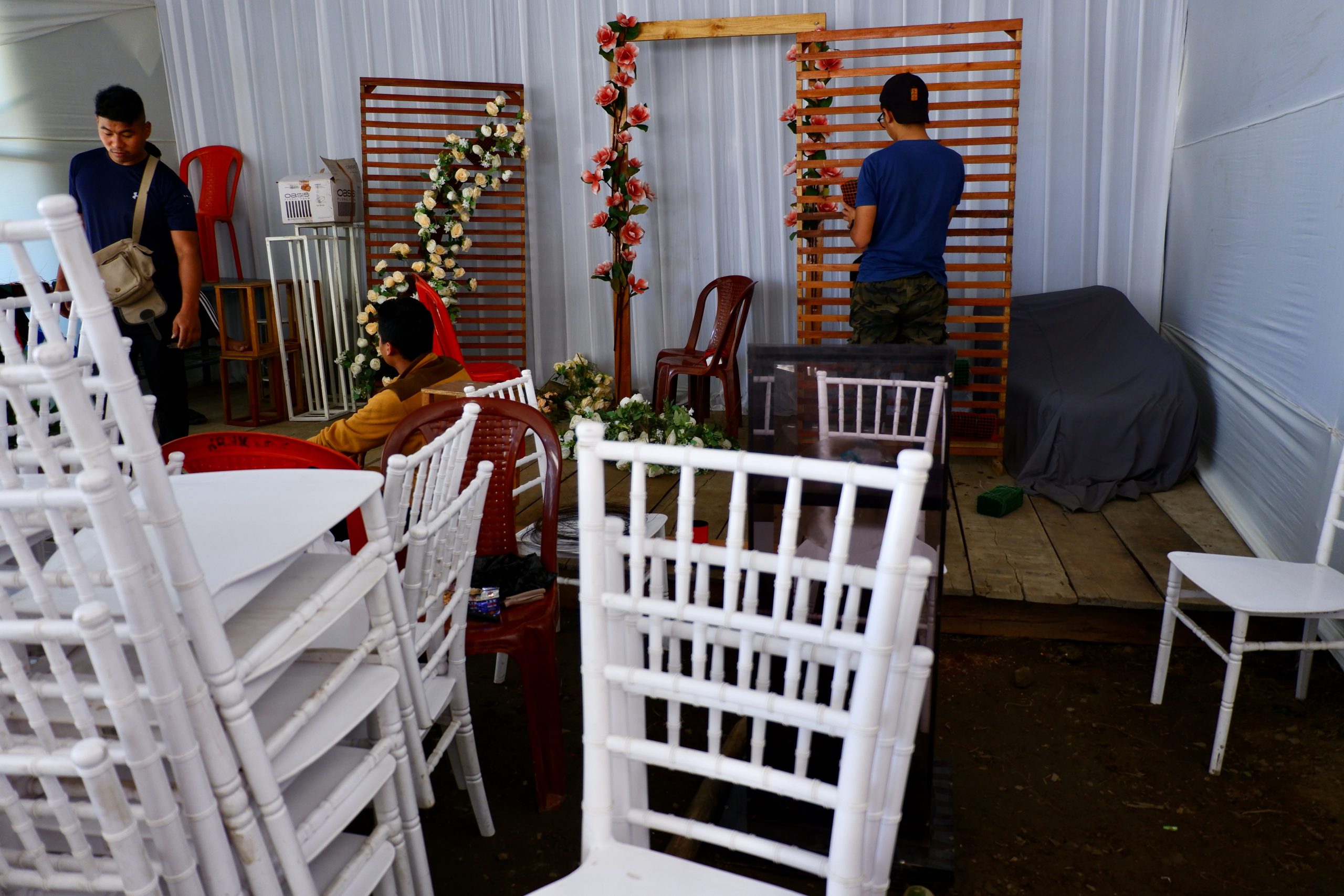 weddingpreparations
weddingpreparations
FFor the many guests, they had set up a washing area. They were very pleased that I found it so clever and remarked that people in Germany aren’t usually so inventive.
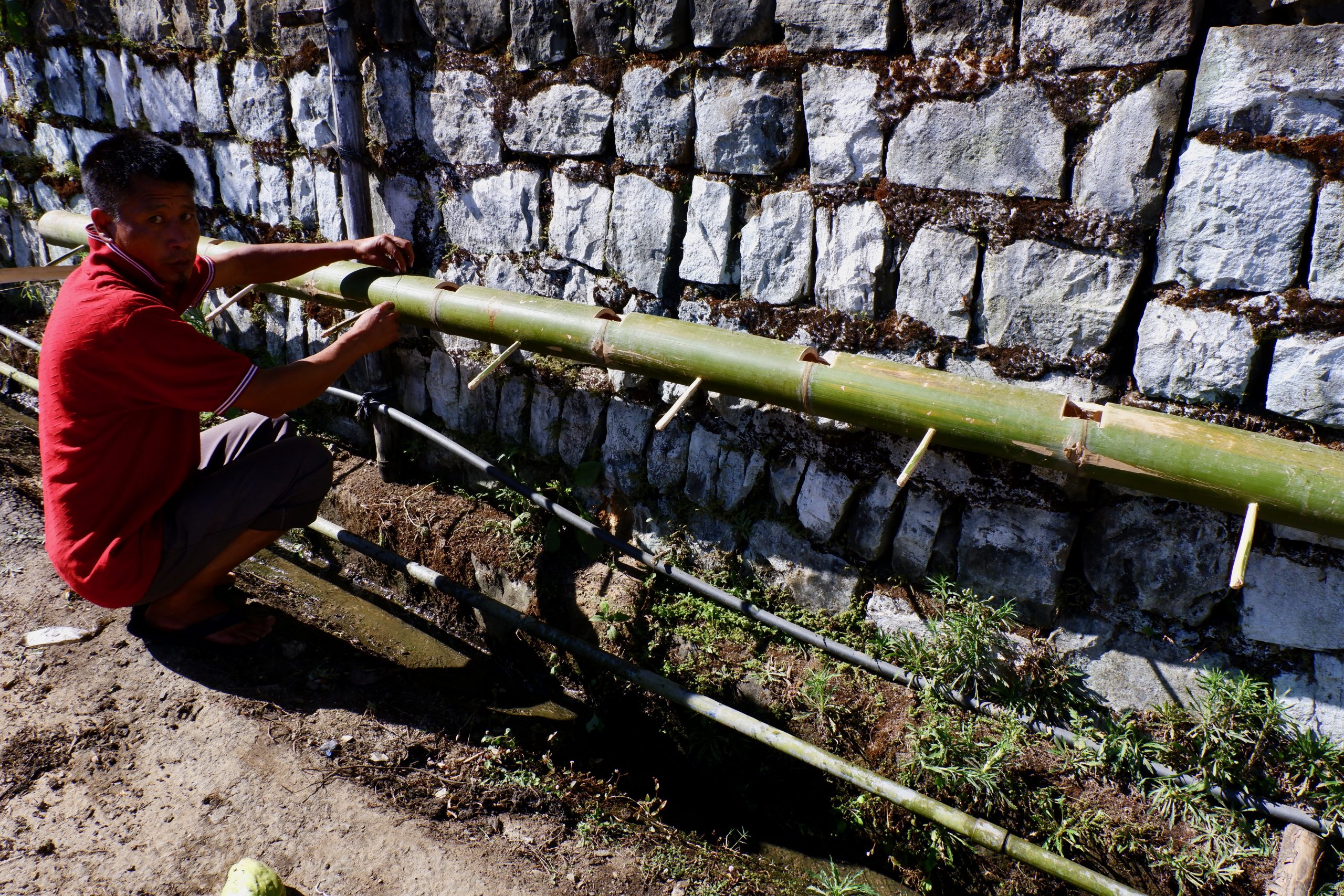 washing system
washing system
People here are very fond of engraving things in stone. Here you can see the various donations made for community projects. The plaque on the left is from much earlier, when the rupee was still worth a lot more.
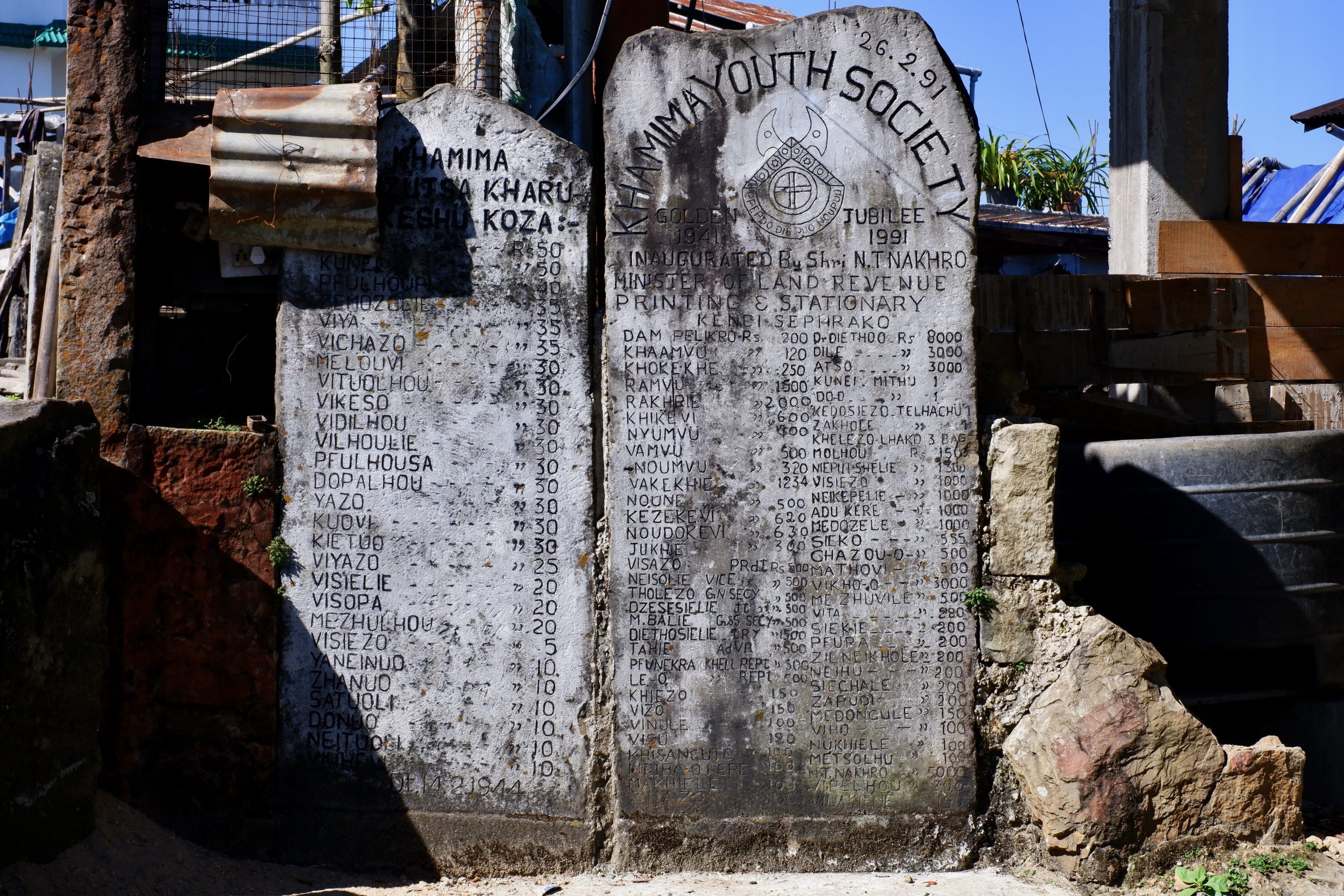 donation plates
donation plates
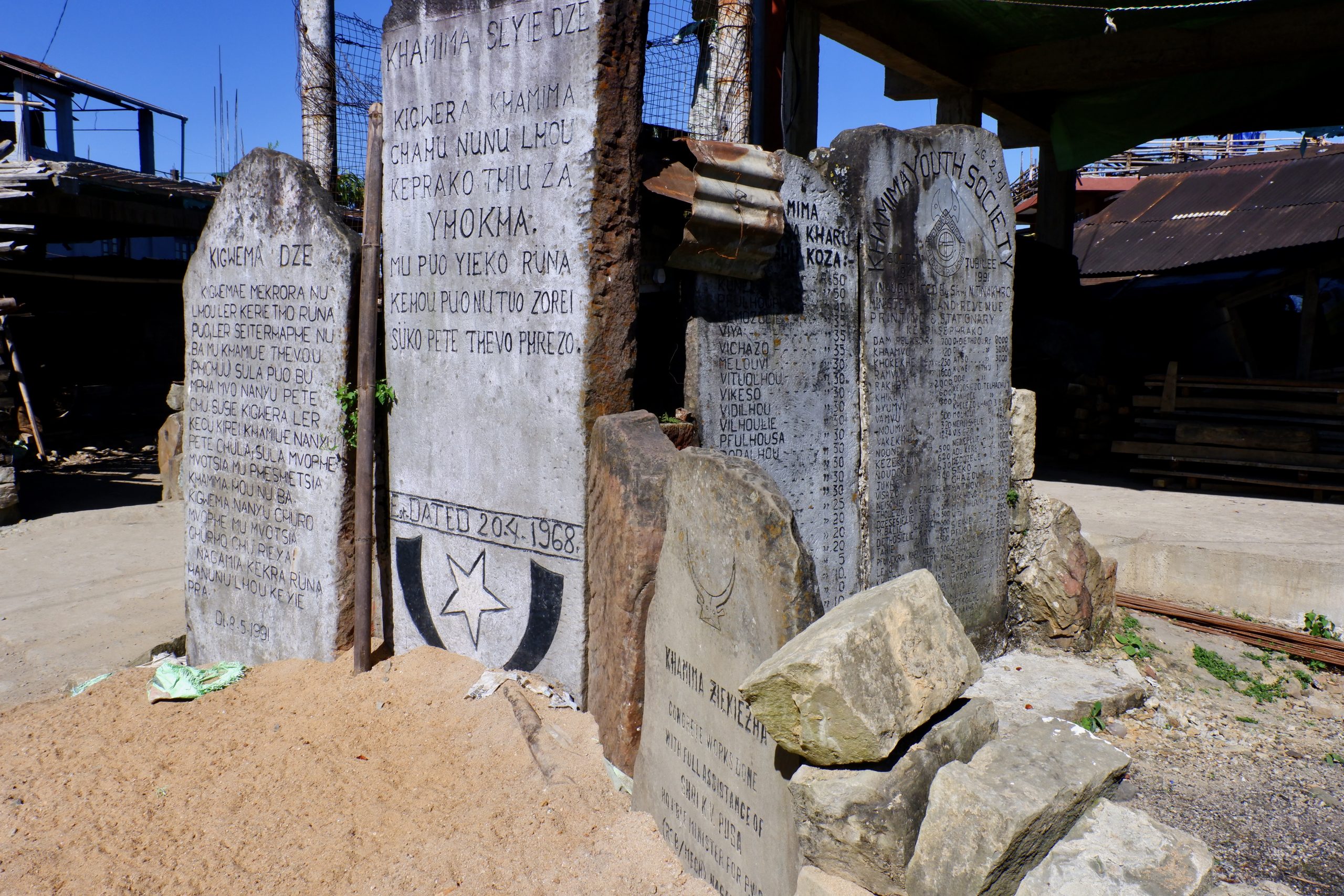 more plates
more plates
I just realized I could go on endlessly with all the things I’ve learned. But maybe that’s enough for this blog post for now — I can always include the rest somewhere later.
To wrap things up, we spontaneously had lunch at Asi’s place. They really went all out, and her mother was quite worried that there wasn’t any meat — how would that look!
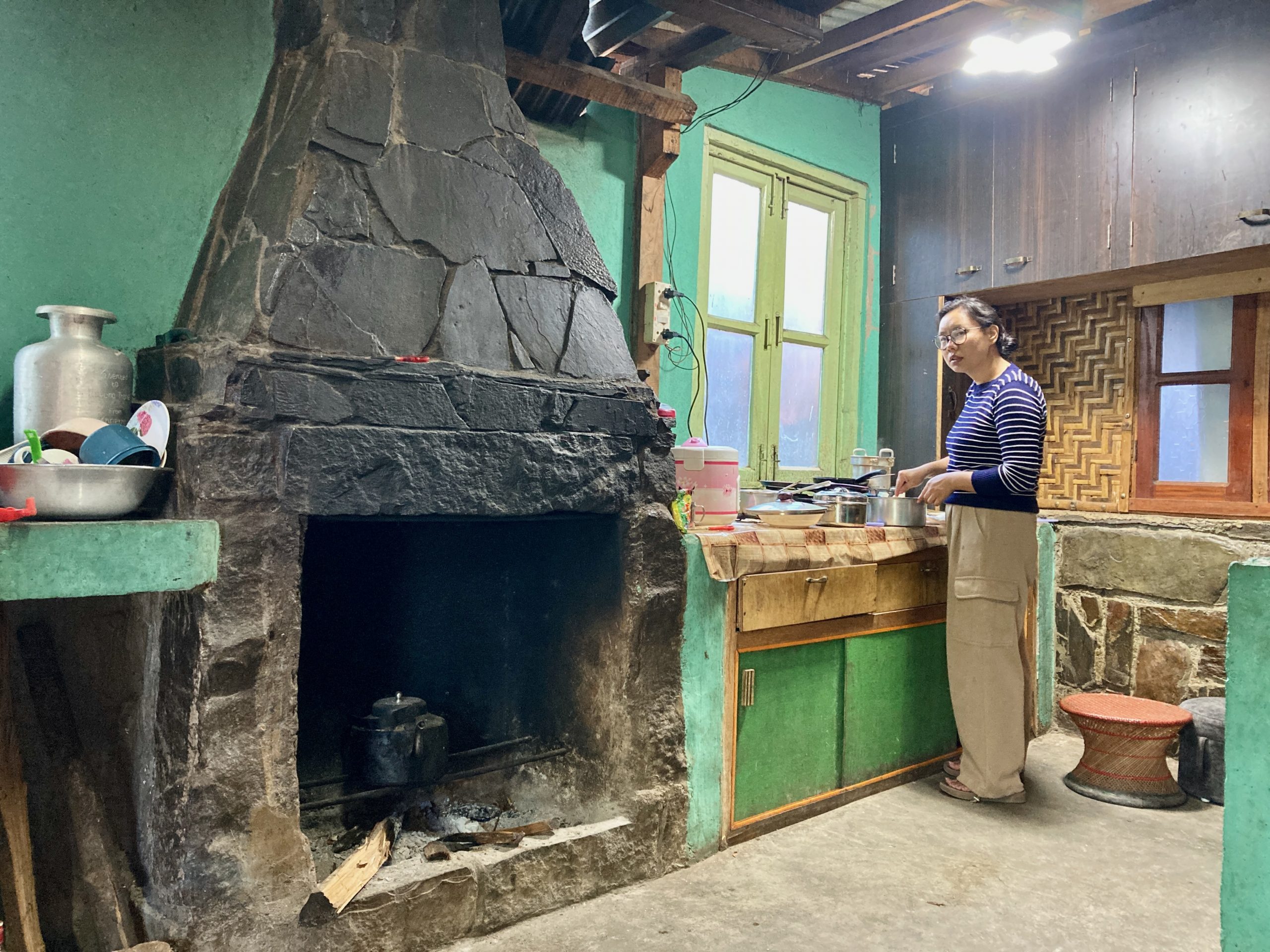 1
1
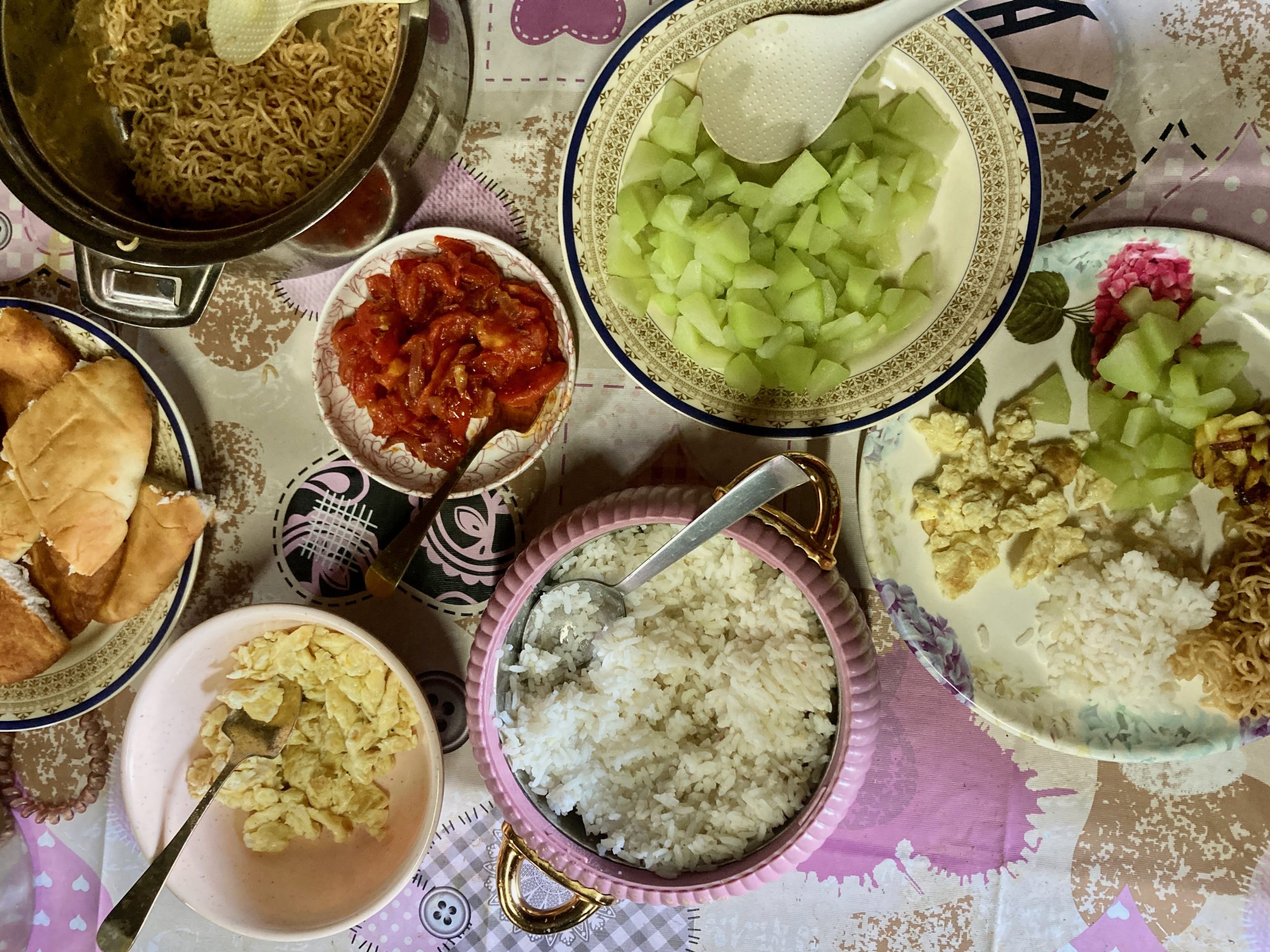 2
2
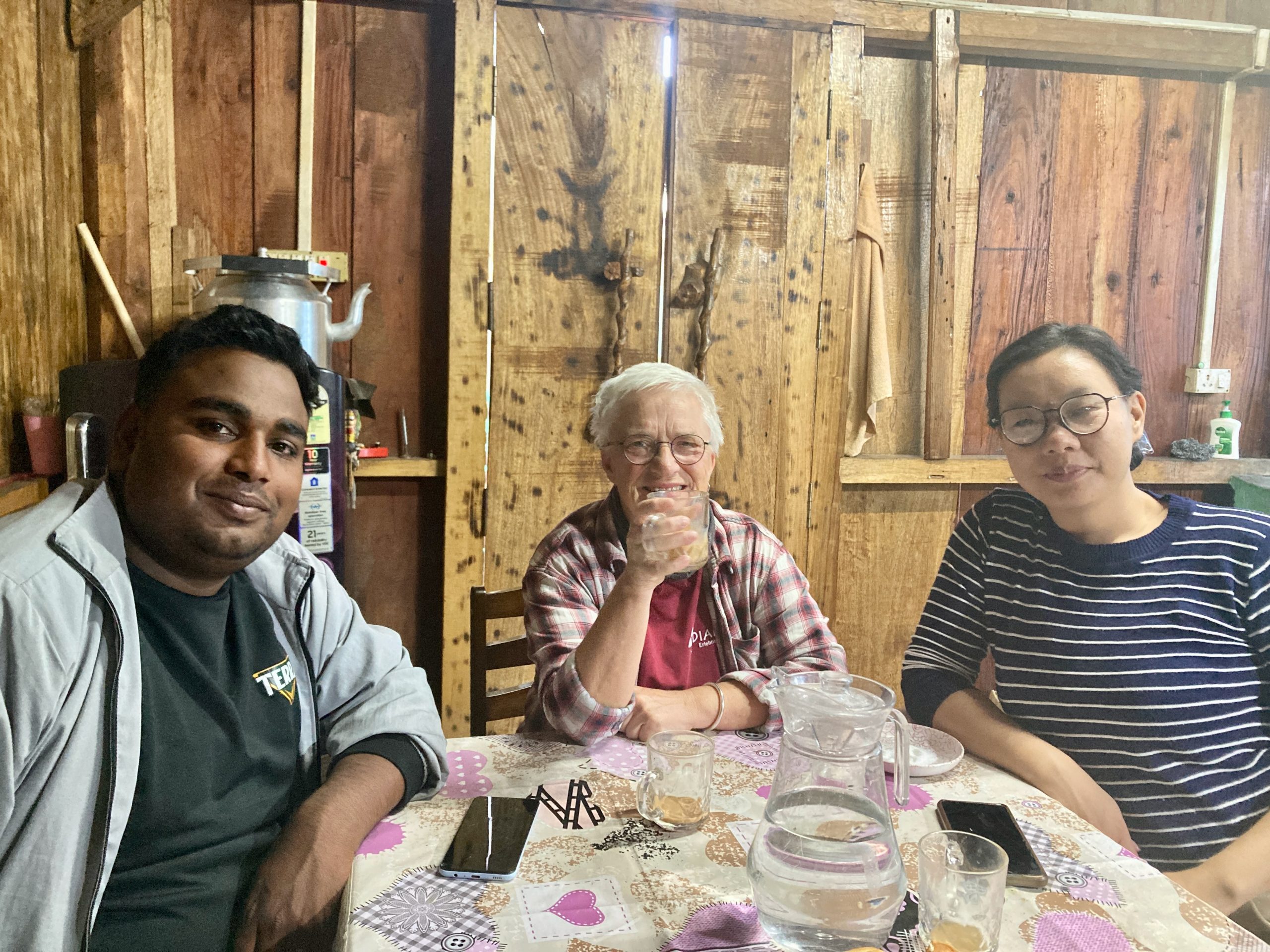 3
3
I thought it was all wonderful — the village, Asi, everything I learned, the invitations, and the whole experience. Highly recommended!
After that, I went with Abul to the Hornbill Festival grounds, where preparations were in full swing. But that will have to wait until the next blog post!
